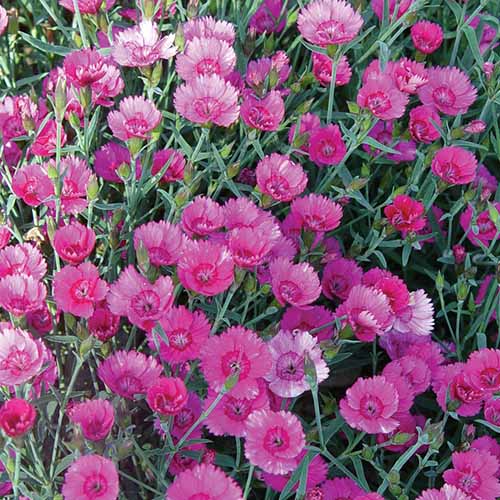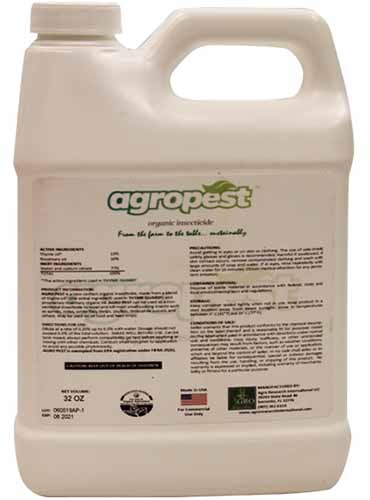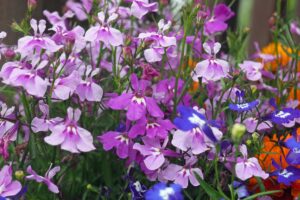Dianthus gratianopolitanus ‘Firewitch’
Among the most fragrant and profuse bloomers in the Dianthus genus, ‘Firewitch’ is a delightful and popular hybrid belonging to the Cheddar pinks species, D. gratianopolitanus.
A low-growing cultivar with small, rosy-pink flowers and an aromatic, spicy fragrance of cloves, the flowers rise on slim stems from dense mats of silvery, blue-green foliage.
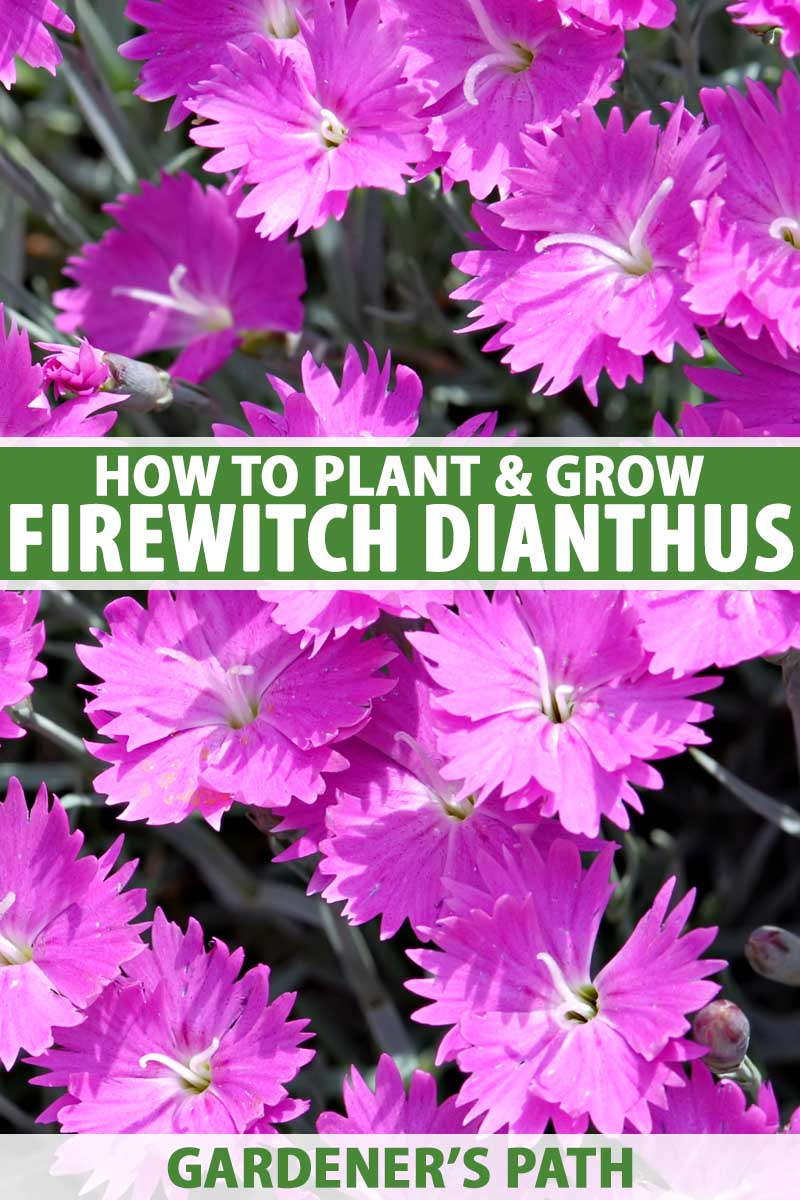
We link to vendors to help you find relevant products. If you buy from one of our links, we may earn a commission.
A true charmer, these long-lasting pinks are a must-have for borders, raised beds, containers, rockeries, and cottage gardens. And they make an appealing ground cover, flowering over summer and remaining evergreen for winter.
This award-winning hybrid is easily cultivated, cold hardy, and among the most heat- and humidity-tolerant of all dianthus cultivars.
It also has a long flowering season, providing a prolific display from late spring into early summer. Regular deadheading produces sporadic flowering over the summer with a second, lighter rebloom in late summer or early fall.
Plus, bees and butterflies love the open-faced flowers, but deer leave it alone.
Color, perfume, and a long, easy season… ‘Firewitch’ has it all!
If that’s something your garden needs, kick back and relax as we dig into the details on how to grow and care for ‘Firewitch’ dianthus.
Here’s everything we’ll cover:
What You’ll Learn
What Is Firewitch Dianthus?
‘Firewitch’ dianthus is a low-growing perennial that forms thick mats of narrow, glaucous foliage. Plants grow four to six inches tall and spread six to 12 inches, with flowers reaching a height of six to eight inches.
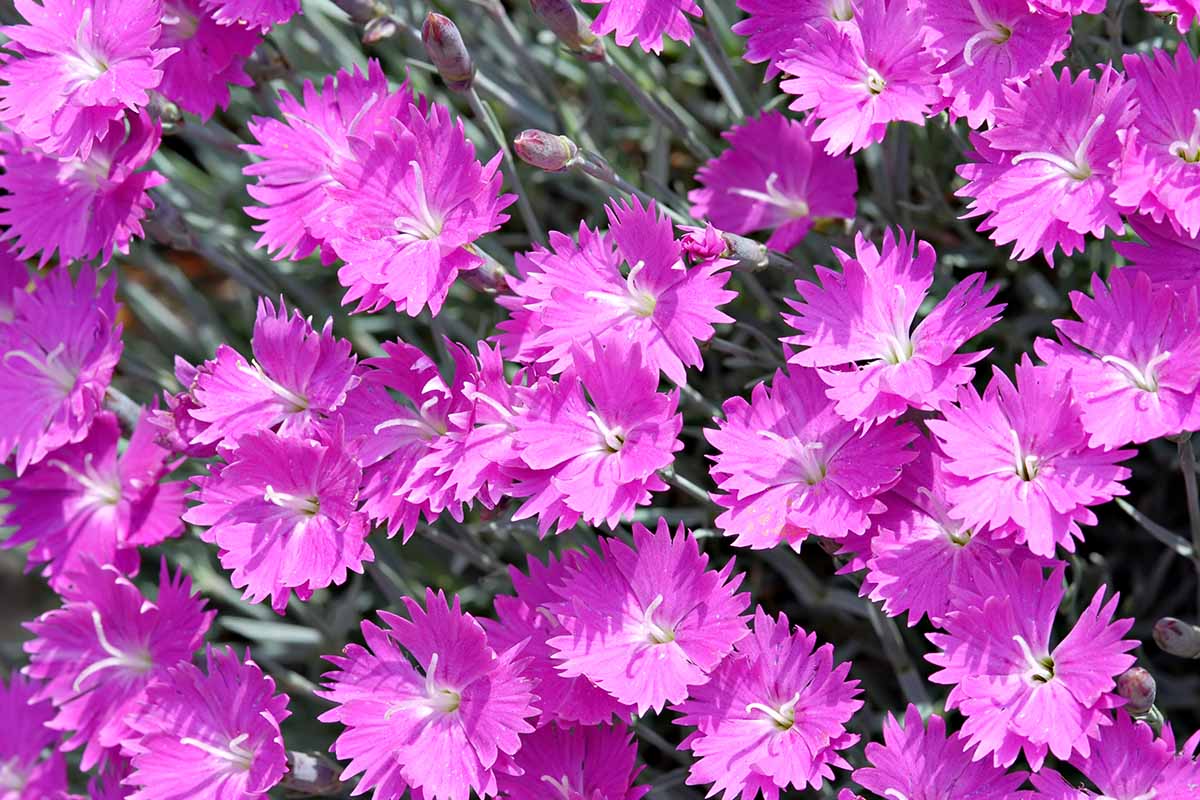
Also known as border, Cheddar, or clove pinks, the single, flat-faced flowers of luscious, magenta pink have distinctive fringed edges and some have contrasting, cherry-colored eyes. The petite flowers measure up to one inch across.
A cultivar of D. gratianopolitanus, this hybrid produces some of the finest growing qualities, like an intense fragrance, the bluest foliage, a long flowering season, and easy cultivation.
Hardy in USDA Zones 3 to 9, the plants are adept at handling cold winters but also offer excellent heat and humidity tolerance – conditions many types of dianthus struggle with.
And in all but the coldest regions, the attractive foliage remains evergreen, adding year-round interest.
Cultivation and History
A favorite for its easy cultivation and consistently floriferous displays, D. gratianopolitanus has won the Award of Garden Merit from the Royal Horticultural Society, and the ‘Firewitch’ hybrid won the prestigious Perennial Plant Association’s Perennial Plant of the Year award in 2006.
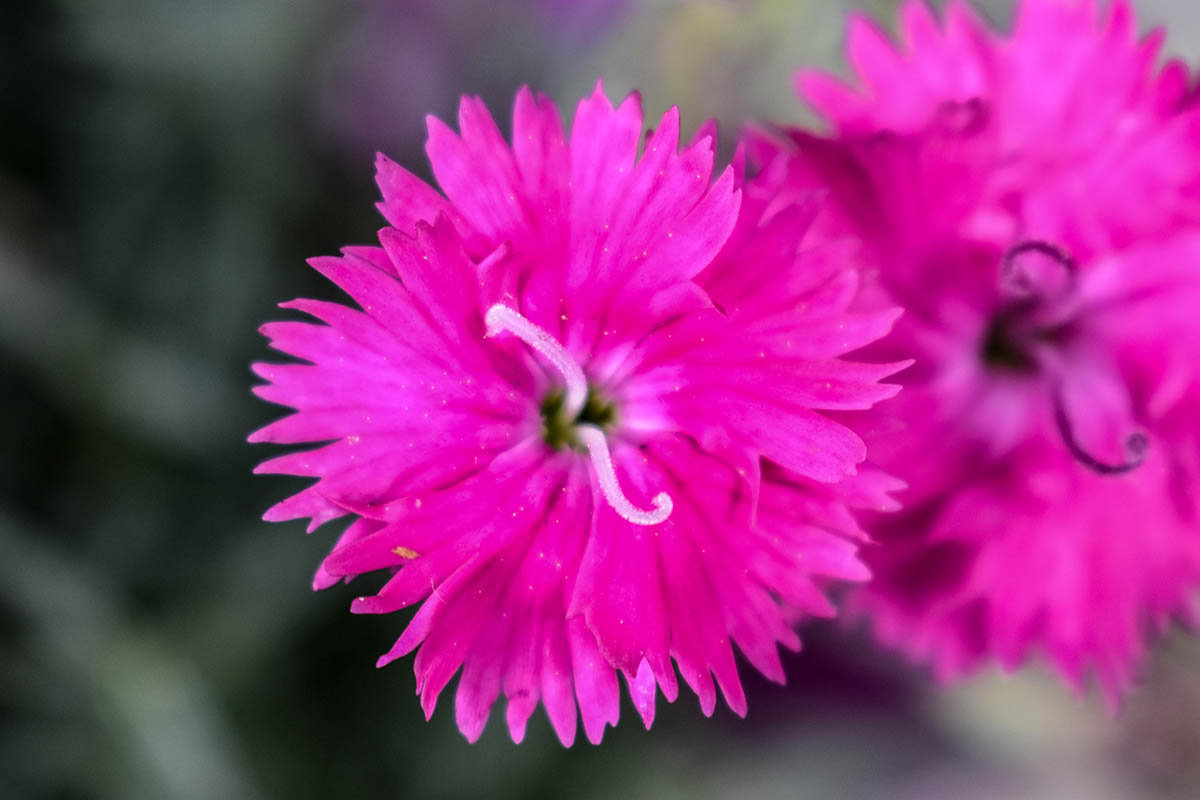
Cheddar pinks are native to central and western Europe, from Ukraine to Cheddar Gorge, England, where they got their common name.
But the specific epithet was given by French botanist Dominic Villars in 1789 and refers to the ancient Roman name for the city of Grenoble, France, where he described and documented them.
Initially bred and introduced in Germany in 1957 as ‘Feuerhexe,’ the cultivar remained largely unnoticed until a Connecticut nursery began cultivation in the 1980s.
Due to their many fine qualities, these outstanding pinks are now a highly popular choice for gardens and landscaping.
Propagation
The most common methods of propagation are by root division, seed cultivation, and rooting stem cuttings.
Root Division
Like all varieties of perennial dianthus, ‘Feuerhexe’ should be divided every four or five years to keep plants vigorous and productive.
The optimal time for division is in early spring when plants are actively growing, but before they begin to flower.
Once new growth appears on the tips, dig up plants and divide the root ball into halves or quarters using a clean, sharp knife.
Trim away one-quarter to one-third of any fibrous, matted root mass.
Dig holes for planting that are large enough to accommodate the roots. Sprinkle some bone meal into the planting site, position the plants so the crown is even with or just above the soil, and backfill with humus-rich, well-draining soil.
Gently firm the plants in place and water lightly.
Seed Cultivation
For complete directions on sowing seeds indoors and outdoors, refer to our guide on how to plant and grow sweet William.
Because ‘Firewitch’ is a hybrid, it’s recommended that you use seed purchased from reputable dealers only – seed collected from garden plants may not have the same qualities as the parent plant.
Stem Cuttings
Stem cuttings should be taken in early spring when plants are growing vegetatively but not flowering.
With clean, sharp garden snips, take small cuttings about two to three inches in length, ensuring they have several leaf nodes.
Strip away leaves from the lower half of the stem and dip into a rooting hormone if desired.
Pot up in small, four- to six-inch pots filled with a moist, well-draining rooting medium like coconut coir, perlite, peat moss, sand, or vermiculite.
Water gently and keep the soil moist but not wet. Place in a location with bright light but out of direct sunshine.
Roots should form in three to four weeks. Plant out when cuttings are three to four inches tall and after all danger of frost has passed.
How to Grow
Firewitch prefers a full sun location in well-draining, nutrient-rich soil with a porous texture and a neutral or slightly alkaline pH of 6.0 to 7.5.
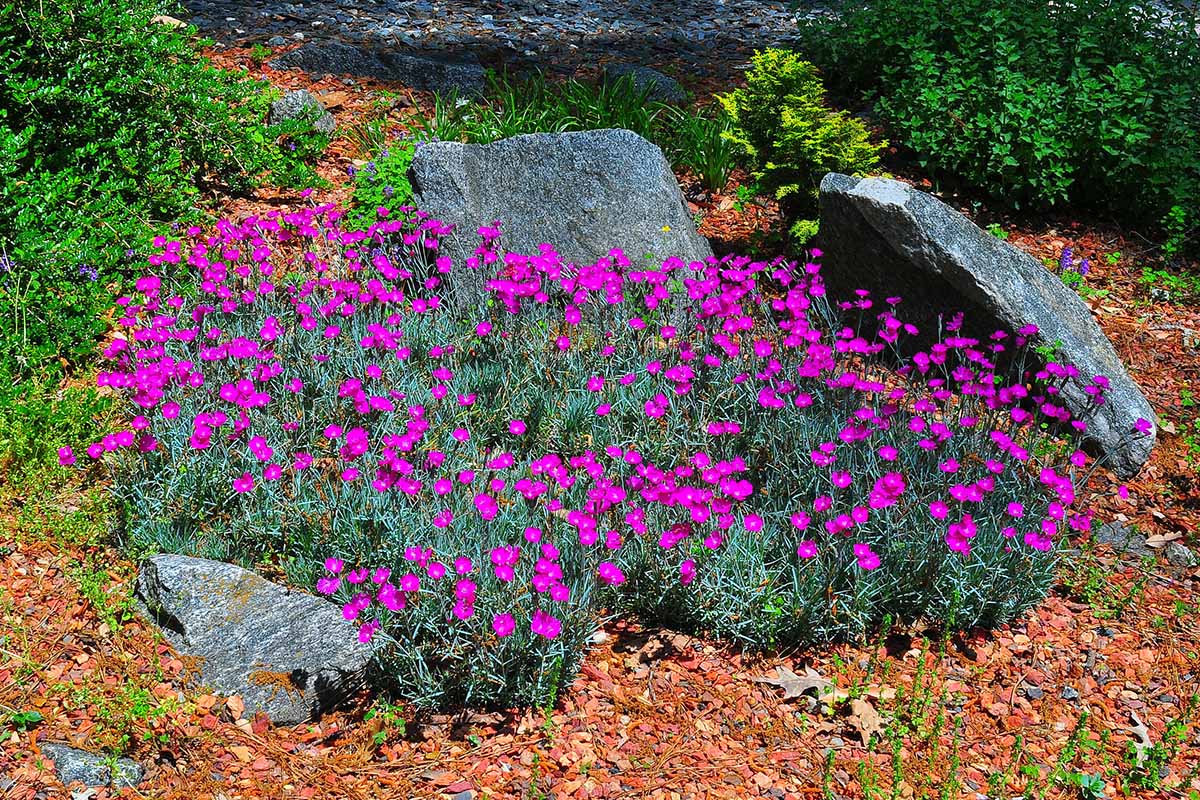
Dig in two inches of compost or rotted manure to a depth of six inches to enrich the soil, and amend with a shovelful of landscape sand or pea gravel to improve drainage if needed.
When planting, ensure the crown is at or just slightly above the soil line to prevent crown rot.
Water regularly in their first season and allow the soil to dry slightly between waterings. Once established, plants are somewhat drought tolerant for short periods but require water in extended dry spells.
For container cultivation, fill pots with a well-draining moisture-retaining medium such as coir, peat moss, perlite, or vermiculite.
Plant on their own or with other specimens that require the same conditions and place in a full sun location, providing afternoon shade if needed.
Water regularly and apply an all-purpose, balanced fertilizer monthly during the growing season.
Growing Tips
- Plant in full sun.
- Situate crowns at or just above soil level.
- Water regularly while plants are becoming established.
Pruning and Maintenance
Regular deadheading promotes reblooming, and you can deadhead spent flowers regularly with clean, sharp garden snips.
But because Cheddar pinks are so floriferous, deadheading can be a tedious task. Shearing is a much easier and faster option than snipping individual stems.
Shear promptly after flowering has finished, around the end of June. Use clean, sharp garden snips or pruning shears to cut back the top one to two inches of foliage and all flower stems together in a few swift strokes.
A moderate feeder, apply an all-purpose, slow release fertilizer in spring or use a water-soluble formula applied at four- to six-week intervals during the growing season to feed your plants.
In fall after reblooming has finished, shear again lightly to remove flower stems and tidy plants. Remove any debris from around and under the plants as well.
For gardens in cold zones, prepare your plants for winter with a four-inch layer of shredded leaf mulch or straw. Remove the mulch in early spring after new growth emerges.
When overwintering container-grown biennials and perennials, withhold water and apply a thick, four-inch mulch, tucking containers into a sheltered spot if needed for cold protection.
When grown as annuals, remove and dispose of plants during fall garden cleanup.
Cultivars to Select
A popular selection, ‘Firewitch’ is widely available through mail-order catalogs, garden centers, and online nurseries.
Container plants are available from our friends at Burpee and Nature Hills Nursery.
Managing Pests and Disease
Aphids and spider mites can sometimes be problematic with dianthus but are easily controlled with a strong spray of water from the garden hose.
For persistent infestations, use a pesticide with natural ingredients like rosemary and thyme essential oils. These are found in Agropest, which is available at Arbico Organics as a quart- or gallon-size concentrate.
In cool, wet conditions, dianthus is susceptible to crown rot. To prevent rot, ensure plants have well-draining soil and plant the crown at or slightly above soil level.
In wet or hot and humid conditions, rust can also appear. To prevent rust, plant in well-draining soil and provide adequate spacing between plants.
Best Uses
A relatively short plant, Firewitch is an excellent choice for borders and edging.
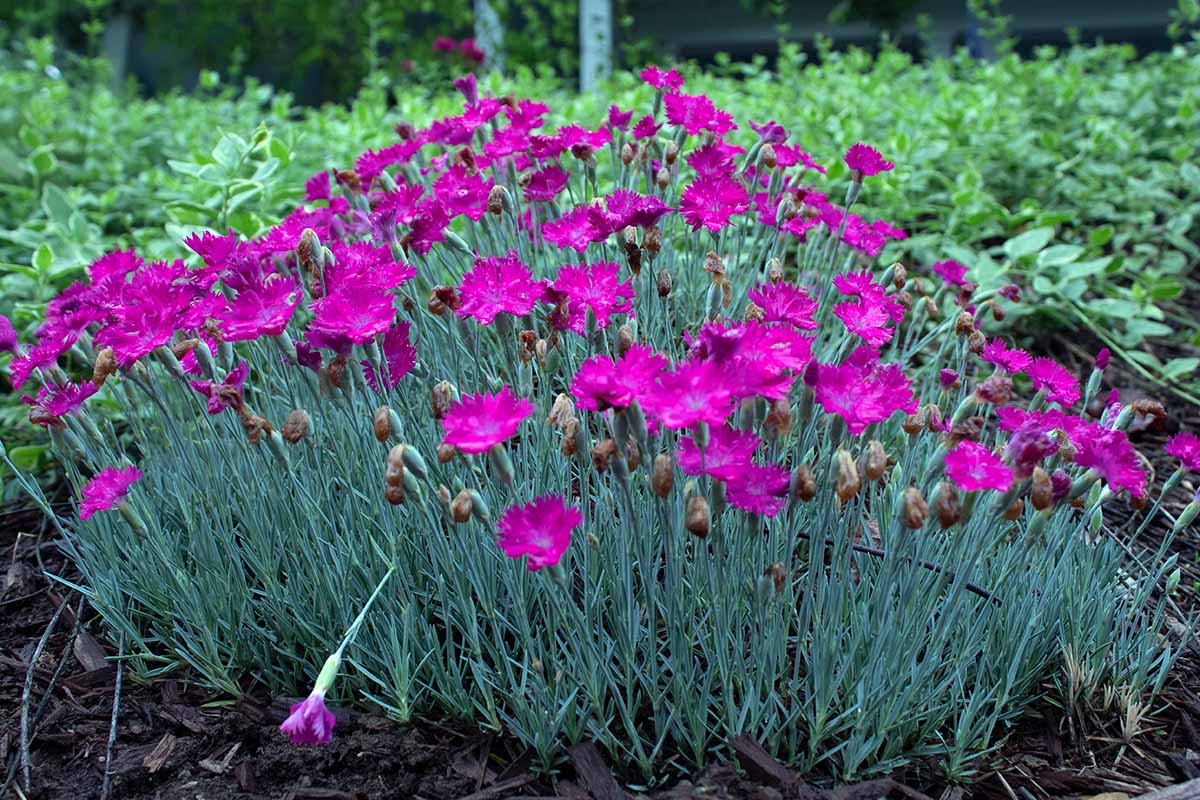
In the off season, the spreading habit of this cultivar forms pretty pools of deep, blue-green foliage, and its ground-hugging, lateral growth is delightful in raised beds, containers, and rockeries, and spilling over retaining walls.
It also makes a beautiful ground cover, especially on dry slopes and in areas with lean soil, though flowers won’t bloom as prolifically there.
Equally attractive in butterfly, courtyard, or cottage gardens, the enticing fragrance makes it an alluring choice to plant near benches, paths, patios, and walkways, or flanking entrances to the garden or the home.
Plus, the long stems make excellent cut flowers, adding charm and fragrance to small vases and floral arrangements.
Quick Reference Growing Guide
| Plant Type: | Evergreen flowering perennial | Flower / Foliage Color: | Rosy pink/silvery blue-green |
| Native to: | Central and western Europe | Tolerance: | Deer |
| Hardiness (USDA Zone): | 3-9 | Maintenance: | Moderate |
| Season: | Late spring to early summer, reblooms in summer and early fall | Soil Type: | Humus-rich |
| Exposure: | Full sun | Soil pH: | 6.0-7.5 |
| Spacing: | 12 inches | Soil Drainage: | Well-draining |
| Planting Depth: | Barely cover (seeds); crown at soil level (transplants) | Attracts: | Bees, butterflies |
| Height: | 6-8 inches | Uses: | Beds, borders, containers, edging, ground cover; butterfly, courtyard, cottage, and rock gardens |
| Spread: | 6-12 inches | Family: | Caryophyllaceae |
| Growth Rate: | Medium | Genus: | Dianthus |
| Water Needs: | Moderate | Species: | Gratianopolitanus |
| Common Pests and Diseases: | Aphids, spider mites; crown rot, rust | Cultivar: | Firewitch (aka Feuerhexe) |
Spellbinding Splendor
With masses of dainty, bright pink flowers, an enchanting scent, and pretty, blue-green foliage, ‘Firewitch’ adds spellbinding splendor to any garden!
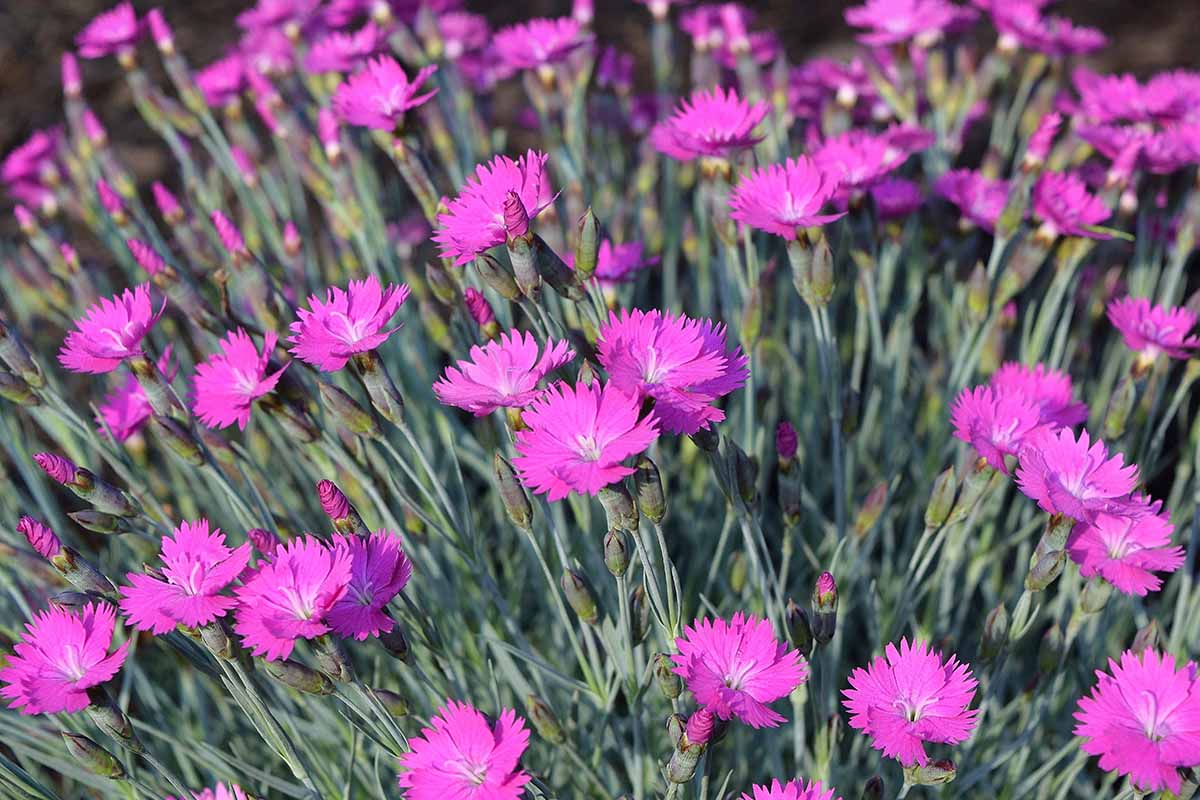
Give them a well-draining site and deadhead after flowering to enjoy a long season.
And be sure to plant plenty where you can enjoy the scent, like beside benches and in patio pots or window boxes.
How do you use ‘Firewitch’ to cast a garden spell? Tell us in the comments section below.
And for more dianthus know-how, add these articles to your reading list next:
